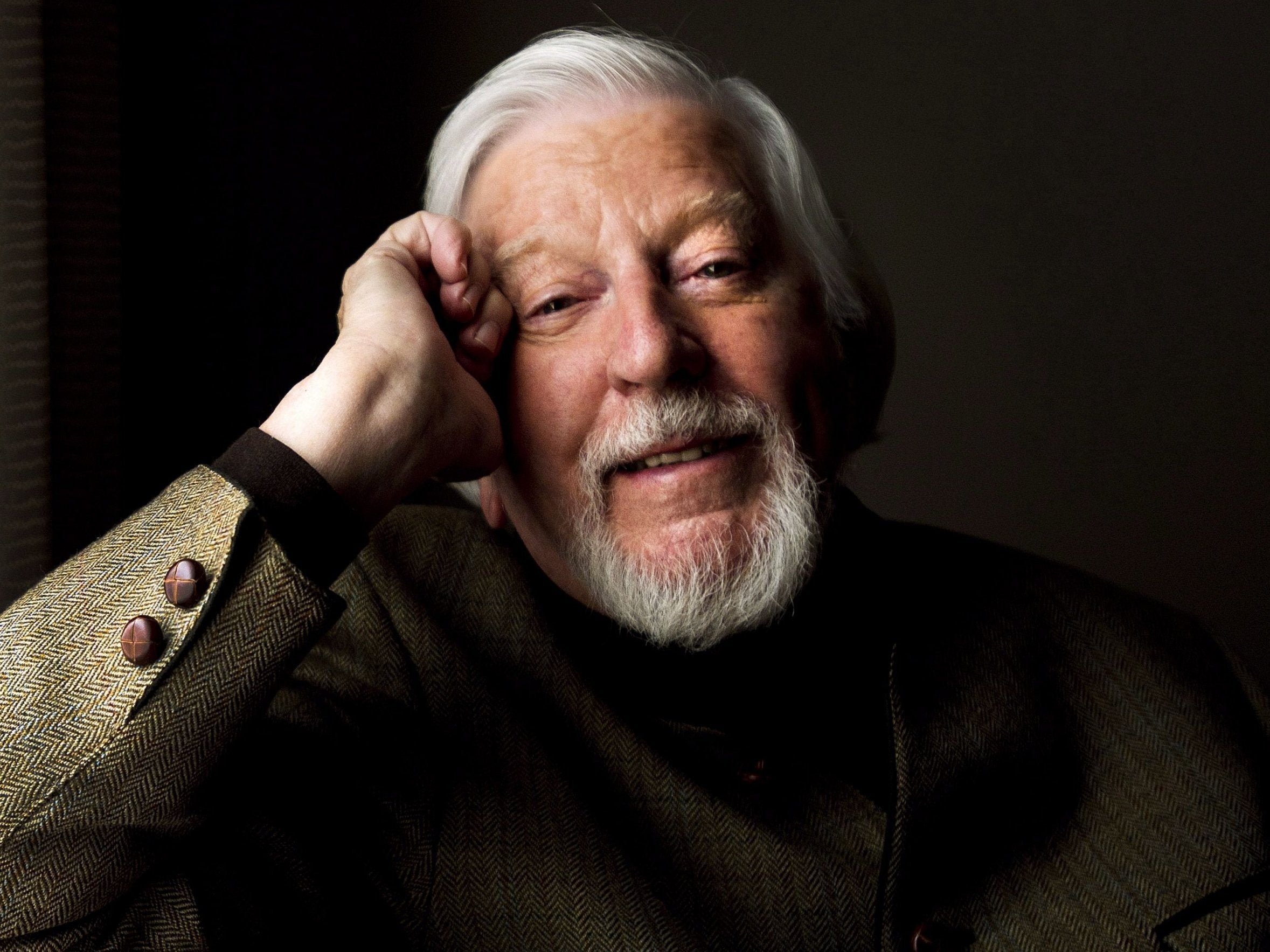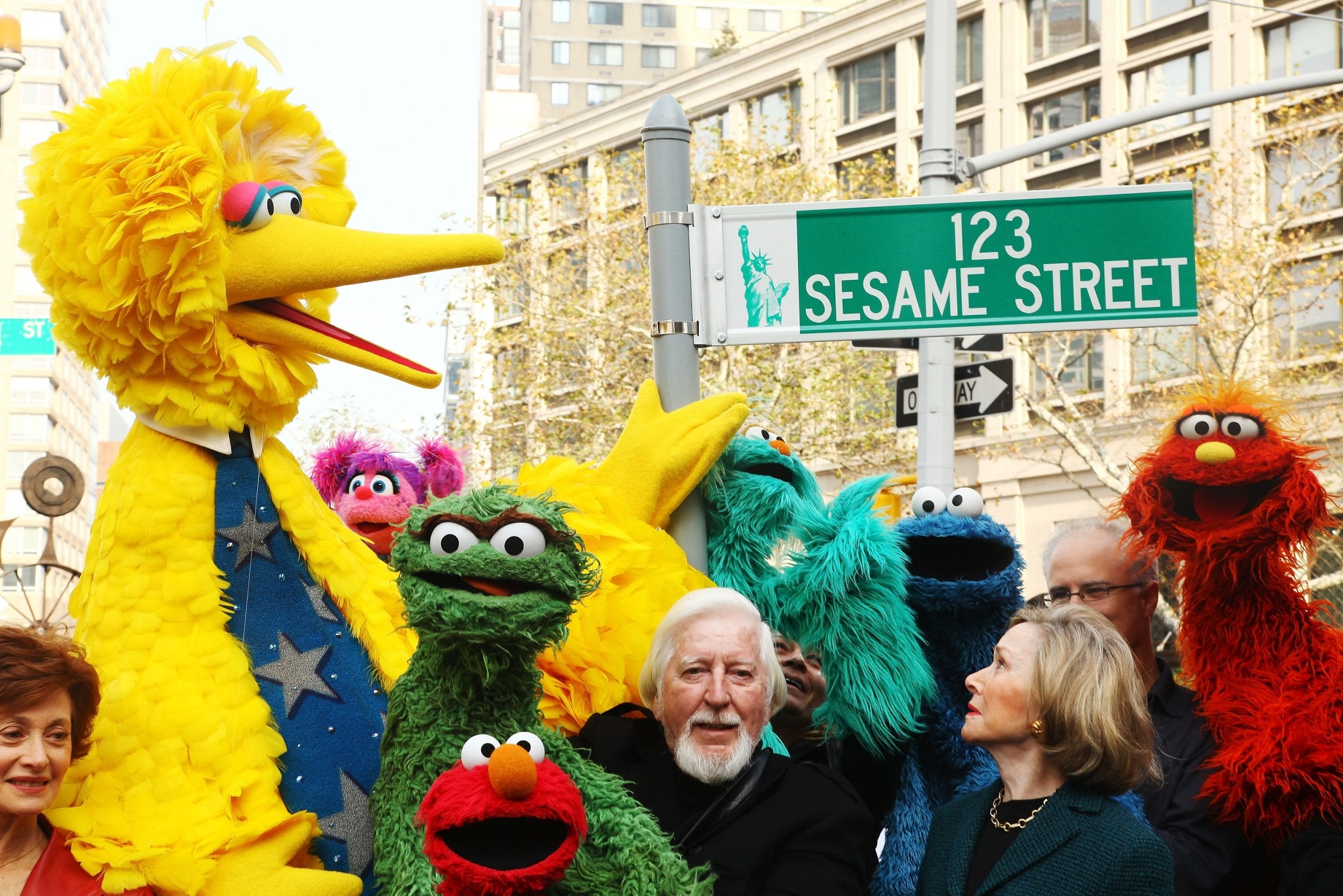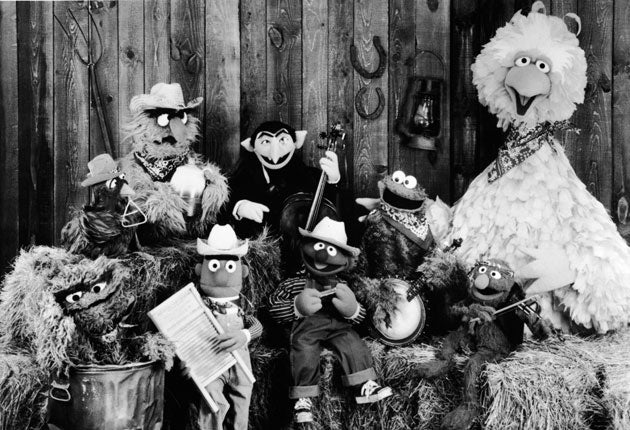Original Big Bird Caroll Spinney speaks about leaving 'Sesame Street' after 50 years
Caroll Spinney – the puppeteer and voice behind Big Bird and Oscar the Grouch – is to retire from the programme aged 84, but he says he'll still be an ambassador for The Muppets when he's 100

Your support helps us to tell the story
From reproductive rights to climate change to Big Tech, The Independent is on the ground when the story is developing. Whether it's investigating the financials of Elon Musk's pro-Trump PAC or producing our latest documentary, 'The A Word', which shines a light on the American women fighting for reproductive rights, we know how important it is to parse out the facts from the messaging.
At such a critical moment in US history, we need reporters on the ground. Your donation allows us to keep sending journalists to speak to both sides of the story.
The Independent is trusted by Americans across the entire political spectrum. And unlike many other quality news outlets, we choose not to lock Americans out of our reporting and analysis with paywalls. We believe quality journalism should be available to everyone, paid for by those who can afford it.
Your support makes all the difference.The friendly, bearded face of Caroll Spinney may not be one you recognise immediately. But if you have watched TV at any point in the past 50 years or so, you are almost certainly familiar with his work. Since 1969, he has played the parts of the gentle, inquisitive Big Bird and the lovably disgruntled Oscar the Grouch on Sesame Street, the long-running children’s program.
On Thursday, as he so often has, Spinney, 84, plans to travel to the studios in Astoria in Queens, where Sesame Street is produced, and record some voices for his colourful alter egos.
Then he will retire from the programme. His roles will be passed on to new performers, and his remarkable half-century run, in which he has embodied two of the most beloved characters on television, will come to an end.
Sesame Workshop, the nonprofit education organisation that produces Sesame Street, did not have a precise figure for the number of episodes Spinney has appeared in, but a spokeswoman says the number was likely thousands of the more than 4,400 episodes that have been created.
Spinney, who spoke last week from his living room, seated next to his wife, Debra, says that he had few, if any, regrets about his time on Sesame Street.
“I always thought: ‘How fortunate for me that I got to play the two best Muppets?’” he says. “Playing Big Bird is one of the most joyous things of my life.”
Asked if he had long been contemplating his departure from Sesame Street, where he has worked since its debut, Spinney answers: “No, not at all.”
But in recent years, Spinney says, the physical requirements of performing the characters has become difficult for him, and he has developed problems with his balance. He stopped doing the puppeteering for Big Bird in 2015 and has since been providing only the voices for him and Oscar.

The impending 50th anniversary of Sesame Street, for which his final voice recordings will be used when it is celebrated on the show – next year on HBO and in 2020 on PBS – seemed like a good moment to take a bow.
Debra Spinney says: “It’s just the fates that bring things to a head sometimes.”
Throughout their Bavarian-style chalet house are countless mementos that Spinney has collected from a lifetime of playing an 8-foot-2 avian and a monster who lives in a garbage can.
There’s the rocking chair with Big Bird’s gargantuan, disembodied orange and pink legs attached at either side; the congratulatory letter Spinney received on his 75th birthday from then-President-elect Barack Obama; the wall of photographs in which Spinney has posed with other TV luminaries like Sid Caesar, Bob Hope and Jerry Seinfeld.
Several pictures show him working alongside Jim Henson, the iconoclastic creator of The Muppets, who recruited Spinney to Sesame Street all those years ago.
Although they had previously crossed paths in the 1960s, Spinney pinpointed a fateful encounter at a Salt Lake City puppeteers’ festival in 1969, when Henson watched him try to perform a multimedia show that went gradually awry.

As Spinney recalls, Henson came to him afterward to say: “I liked what you were trying to do.”
Soon after, Henson invited Spinney to play two Muppet characters that were being developed for Sesame Street, which made its debut on public television later that year. One was Oscar, who was envisioned as a cranky, trash-loving purple character. (He was orange in his earliest appearances, before taking on his familiar green hue.)
The other was Big Bird, who was performed in a full body costume and who, Spinney says, he was originally asked to play as “a funny, dumb country yokel”.
After a few episodes, Spinney made a suggestion to the show’s producers. “I said, I think I should play him like he’s a child, a surrogate,” he recalls. “He can be all the things that children are. He can learn with the kids.”
That had a lasting effect on Big Bird and on Sesame Street, where the character came to embody the tender, nurturing soul of the show.
“Big Bird has always had the biggest heart on Sesame Street, and that’s Caroll’s gift to us,” says Jeffrey Dunn, president and chief executive of Sesame Workshop. “I think it’s fair to say that Caroll’s view of the world and how we should treat each other has shaped and defined our organisation.”
The character became an instantly recognisable symbol of youthful guilelessness, travelling the world and appearing on other TV shows like Saturday Night Live, The West Wing and The Colbert Report. Big Bird was the protagonist of the 1985 Sesame Street feature film Follow That Bird, and Spinney was the subject of a 2014 documentary, I Am Big Bird.
Spinney has said that over the years his work on Sesame Street acquainted him with countless fans who could not help but tell him – often with eyes full of tears – how the show had changed their lives.
He speaks of a woman he met in Massachusetts, who related how a chance encounter with Oscar the Grouch in her adolescence taught her it was permissible to stand up for herself.
While wandering through the TV channels, Spinney says, the woman came upon “this strange creature saying no”. As she later told him, “I didn’t know you could say no to an adult.”
Sesame Street was also responsible for introducing Spinney to Debra, who was working in the community education department of what was then called Children’s Television Workshop when they first met, in 1972. “I couldn’t believe Big Bird was coming up and talking to me,” she says of their earliest interactions.
Though Oscar and Big Bird seem to have little in common, Spinney observed that they were both solitary characters who performed with other humans but few other Muppets. That suited him, he says.
“I’m a soloist,” says Spinney. “I’m not good with a team. I’m out of sync with the rest. They’re all going left at the same time, while I’m the only one going right.”

More forlornly, he says that it was “very lonely in there” playing Big Bird. “I was separated from everybody.”
Matt Vogel, who has been Spinney’s apprentice on Big Bird since 1996, will succeed him in the role.
Vogel, who has also inherited the parts of other popular Muppets, including Kermit the Frog and Count von Count, says he saw the task of carrying on Spinney’s legacy as “daunting and important”.
“The more I do the character, the more that I try to preserve what I think Caroll’s intentions were,” he says. “Inevitably, part of our own personality starts to creep into those characters. But that’s the way they live on.”
At his departure, Spinney will be one of the last surviving Sesame Street staff members who has been with the show since its very beginning.
In some form or another, he plans to remain an ambassador of Sesame Street, at conventions and other public appearances. “I’ll be 100 years old, doing Muppet stuff,” he says.
He recalls how he and Henson used to imagine themselves “being old” – by which they meant, in their seventies– “doing Muppets the rest of our lives.” Henson, who died in 1990 at age 53, “didn’t get that chance, but I will ,” Spinney says.
Big Bird shows up frequently in the artwork that Spinney creates and surrounds himself with at home. That collection includes paintings like the one he calls Going Home, in which Big Bird is seen approaching an enormous tree, its many branches colonised by countless birdhouses.
Another Spinney painting, titled In My Dreams I Can Fly, shows Big Bird – who is traditionally depicted as flightless – with his wings spread as he soars high above the countryside.
Repeating a phrase he has often used to describe his relationship to the compassionate Big Bird over the years, Spinney says, “I don’t get to play him – I get to live his life.”
Though the role will no longer be his, he is hanging onto a portion of the playful spirit that came with it.
“I’ve been playing a 6-year-old for 50 years,” Spinney says. With a bit of mischievous glee, he adds: “And the children bought it.”
© New York Times
Join our commenting forum
Join thought-provoking conversations, follow other Independent readers and see their replies
Comments